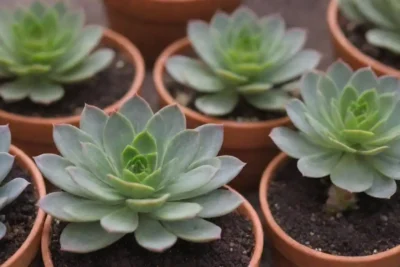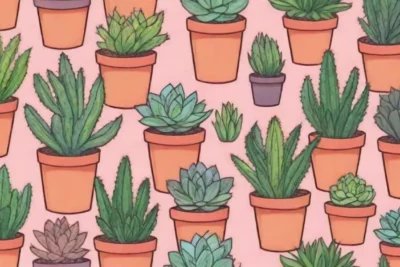
Uncovering the Unique Growth Forms of Rare Succulent Varieties

Introduction
Succulents have captivated plant enthusiasts and garden lovers alike with their alluring shapes, colors, and unique adaptability. These hardy plants possess the extraordinary ability to store water in their leaves, stems, or roots, making them remarkable survivors in arid environments. Among the vast array of succulent species, some rare varieties boast intriguingly unique growth forms that not only make them aesthetically appealing but also reveal fascinating insights into their adaptations in nature.
In this article, we will explore the distinctive growth forms of various rare succulent varieties, diving deep into the characteristics that set them apart from more common succulents. We will discuss their native habitats, unique adaptations, cultivation requirements, and conservation efforts that strive to keep these magnificent plants from disappearing entirely. This comprehensive study will shed light on the beauty and complexity of rare succulent varieties, offering enthusiasts a more profound appreciation for these exceptional plants.
The Fascinating World of Succulent Growth Forms
Succulents exhibit a plethora of growth forms, ranging from rosettes to cacti-like shapes, but some possess distinct characteristics merit special attention. Growth form describes the overall structure and habit of a plant, influenced by its genetic makeup and environmental conditions. When discussing rare succulents, it becomes evident that these growth forms can often be categorized into several types, including columnar, caudiciform, creeping, and tree-like structures.
Columnar Succulents
Columnar succulents are characterized by their tall, upright growth habit, resembling a traditional column. A prime example is the Pachycereus pringlei, or the giant cardón cactus, which can reach heights of up to 60 feet. This impressive stature is not merely for show; it serves multiple functions. The vertical growth minimizes the amount of sunlight obstructed from the plant's lower leaves while maximizing access to sunlight, essential in its native desert habitat.
Columnar succulents often feature thick, ribbed stems covered in spines or hair, which functions as a defense mechanism against herbivores. Moreover, these plants have adapted to store vast amounts of water in their stems, allowing them to thrive in regions with long drought periods. When cultivated, columnar succulents require ample space and bright light, yet they can still be grown successfully indoors within large pots, provided their watering needs are closely monitored.
Caudiciform Succulents
The term "caudiciform" comes from the Latin word "caudis," meaning "tail." These succulents feature a swollen base, or caudex, that acts as a water reservoir. One standout example is the Jatropha podagrica, known for its round, bulbous trunk resembling a small tree stump. The adaptive caudex allows these plants to survive extended dry spells, storing water efficiently.
Caudiciform succulents often develop beautiful leaf patterns and have unique flowering habits. For instance, the Jatropha podagrica produces clusters of small, bright red flowers that provide a stark contrast to its lush green foliage in the summer months. Well-suited for container gardening, caudiciform succulents generally prefer a soil mix that drains well, along with bright, indirect sunlight. Proper pruning may also be necessary to maintain their unique shapes and promote healthy growth.
 Tailoring Your Care Routine to Various Succulent Growth Patterns
Tailoring Your Care Routine to Various Succulent Growth PatternsCreeping Succulents
Creeping or spreading succulents are plants that develop low-growing, sprawling characteristics, often forming attractive ground cover. A prime example is Delosperma cooperi, colloquially known as the "ice plant." This succulent has elongated, leafy stems that spread outward, covering substantial ground as it grows.
The creeping growth form of this succulent serves several functions, such as efficient water absorption and resource allocation. The extended, shallow root systems help capture moisture early during rainfalls, while the mat-like foliage reduces soil erosion, ensuring better moisture retention. When it comes to cultivation, creeping succulents thrive in sandy, well-draining soils with full sunlight exposure. They are perfect candidates for rock gardens, borders, and hanging baskets, showcasing bright blooms during the late spring and summer months.
The Importance of Habitat and Conservation
Rare succulent varieties often inhabit specific ecological niches that influence their unique growth forms and adaptations. Many such succulents are native to regions with unpredictable rainfall patterns or extreme temperatures, showcasing extraordinary resilience in hostile environments.
Habitat Specificity
Habitat specificity refers to the distinct environmental conditions required for a plant's growth. For many rare succulent varieties, these habitats can be limited to specific geographical regions, which often put them at risk due to habitat destruction, climate change, and over-collection by enthusiasts. For example, the Aloe polyphylla, or spiral aloe, is known for its striking spiral pattern and is native to the highlands of Lesotho. This specific adaptation allows it to gather water efficiently while minimizing water loss through transpiration, a crucial survival tactic in its native environment.
Invasive species are also a critical threat, as they compete with native succulents for resources and can alter soil composition. Protecting these specialized habitats ensures endangered species can thrive and continue to adapt to their environment.
Conservation Efforts
Given their plight, many conservation efforts focus on safeguarding rare succulent varieties and their habitats. Organizations and researchers often emphasize sustainable practices to protect native ecosystems. For example, captive breeding programs are crucial for preserving at-risk species, allowing researchers to study these plants' growth forms and ecological requirements.
Additionally, governments and local organizations work together to implement protected areas where succulents can thrive free from human interference. Public awareness campaigns educate plant enthusiasts about responsibly cultivating and preserving rare succulent varieties, emphasizing the importance of ethical sourcing and habitat protection. By fostering connections between horticulturalists, researchers, and hobbyists, we can work collectively toward the preservation of these unique plants.
 Key Indicators of Healthy vs. Unhealthy Growth in Succulents
Key Indicators of Healthy vs. Unhealthy Growth in SucculentsConclusion

Exploring the fascinating growth forms of rare succulent varieties reveals a world of beauty and complexity often overlooked in the realm of plant cultivation. From the impressive stature of columnar succulents and the unique adaptations of caudiciforms to the efficient spreading of creeping succulents, each type offers a unique glimpse into the resilience and ingenuity of nature.
As we celebrate these distinctive succulents, it is essential to acknowledge the conservation efforts underway to protect their habitats and ensure their survival for future generations. By cultivating a deeper understanding of these rare species, we can foster a responsible and ethical approach to gardening and plant collection that prioritizes the sustainability of our precious natural resources.
In summary, rare succulents represent not just a visual marvel in our collections but also a vital part of our planet's biodiversity. By prioritizing conservation and sustainable practices, we can protect these unique growth forms, allowing many more plant enthusiasts to appreciate their beauty, resilience, and the stories they tell about nature's adaptability. So, whether you tend to a single pot or an extensive garden, remember that every succulent you nurture contributes to a broader effort toward protecting these remarkable plants from the world's ever-changing challenges.
If you want to read more articles similar to Uncovering the Unique Growth Forms of Rare Succulent Varieties, you can visit the Growth Patterns category.





You Must Read